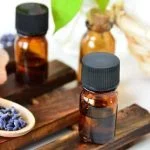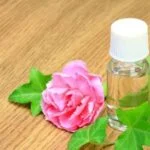Aromatherapy diffusers have become increasingly popular in recent years, as more people seek natural and holistic ways to improve their well-being. These devices are used to disperse essential oils into the air, allowing for easy inhalation and absorption of the therapeutic properties of the oils. In this article, we will explore the world of aromatherapy diffusers, including their benefits, types, and how they work to enhance your physical and emotional health.
Aromatherapy has been used for centuries as a natural remedy for various ailments, and is known for its ability to promote relaxation, reduce stress, improve sleep quality, boost mood, and even alleviate certain physical discomforts. Aromatherapy diffusers offer a convenient way to experience these benefits by dispersing fine particles of essential oils into the air. But how exactly do these devices work?
What makes them effective in delivering the aromatic compounds of essential oils? We will delve into these questions to better understand the inner workings of aromatherapy diffusers.
In addition to explaining how aromatherapy diffusers function, we will also discuss the different types of diffusers available on the market today and their respective features. Whether you prefer a nebulizing diffuser, ultrasonic diffuser, or heat-based diffuser, each type offers unique advantages and considerations when it comes to effectively distributing essential oils in your living space. So let’s dive in and discover the fascinating world of aromatherapy diffusers.
Benefits of Aromatherapy
Aromatherapy is a popular practice that uses natural plant extracts to promote health and well-being. One of the most common ways to experience the benefits of aromatherapy is through the use of aromatherapy diffusers. These devices work by dispersing essential oils into the air, allowing their aromatic and therapeutic properties to be inhaled and absorbed by the body. The benefits of aromatherapy are numerous and can have a positive impact on both physical and mental health.
Relaxation and Stress Relief
One of the key benefits of aromatherapy is its ability to promote relaxation and alleviate stress. Inhalation of certain essential oils, such as lavender or chamomile, has been shown to have a calming effect on the nervous system. Aromatherapy diffusers help to create a soothing environment, making it easier for individuals to unwind and de-stress after a long day.
Improved Sleep Quality
Many people struggle with sleep issues, whether it’s difficulty falling asleep or staying asleep throughout the night. Aromatherapy diffusers can be particularly beneficial for promoting better sleep quality. Certain essential oils, such as bergamot or ylang-ylang, are known for their sedative properties, which can help to induce relaxation and prepare the body for a restful night’s sleep.
Mood Enhancement
Aromatherapy is also valued for its ability to uplift mood and improve emotional well-being. When inhaled, certain essential oils can stimulate the brain’s limbic system, which is responsible for emotions and memories. Oils like citrus or peppermint have invigorating properties that can help boost mood and increase feelings of positivity. By using an aromatherapy diffuser, individuals can create a pleasant atmosphere that positively impacts their emotional state.
Types of Aromatherapy Diffusers
Aromatherapy diffusers come in various types, each with its own unique way of dispersing essential oils into the air. Understanding the different types can help you choose the best one for your needs and preferences.
Nebulizing Diffusers
One common type of aromatherapy diffuser is the nebulizing diffuser. This type of diffuser works by breaking down essential oils into tiny particles and then dispersing them into the air in a fine mist. Nebulizing diffusers do not require water or heat, which means that the original chemical composition of the essential oils remains intact. This makes them an ideal choice for those who want to experience the full therapeutic benefits of essential oils.
Ultrasonic Diffusers
Another popular option is the ultrasonic diffuser, which uses ultrasonic vibrations to create a fine mist of water and essential oils. The vibrations break down the oil and water into tiny particles that are then released into the air as a mist. Ultrasonic diffusers also double as humidifiers, adding moisture to the air which can be beneficial for dry indoor environments.
Heat Diffusers
Heat diffusers, such as candle or electric heat diffusers, use heat to evaporate the essential oils and disperse their aroma into the air. While these types of diffusers are easy to use and often more affordable, they may alter the chemical composition of the essential oils due to exposure to heat.
Understanding how each type of aromatherapy diffuser works can help you make an informed decision about which one will best suit your needs and preferences. Whether you prioritize maintaining the integrity of essential oils or want added benefits like humidity from your diffuser, there is a type to fit your lifestyle.
How Does Aromatherapy Diffuser Work
Aromatherapy diffusers work by dispersing essential oils into the air, allowing you to enjoy their therapeutic benefits through inhalation. There are various types of diffusers on the market, each working in different ways to disperse the essential oils into the surrounding environment. Here are some of the most common types of diffusers and how they work:
- Nebulizing Diffusers: These diffusers do not require water or heat to function. Instead, they use an atomizer to break down the essential oils into tiny particles, which are then released into the air in a fine mist.
- Ultrasonic Diffusers: These diffusers utilize ultrasonic vibrations to create a fine mist of water and essential oils that is released into the air as a cold vapor.
- Heat Diffusers: As the name suggests, these diffusers use heat to evaporate the essential oils and disperse their aroma into the air. They often use a small candle or electric heat source to warm the oil.
Each type of aromatherapy diffuser has its own advantages and disadvantages, so it’s important to consider your needs and preferences when choosing one.
When using an aromatherapy diffuser, it’s important to follow the manufacturer’s instructions for adding water and essential oils. Typically, you’ll add water and a few drops of your chosen essential oil into the diffuser’s reservoir before turning it on. The device will then disperse a fine mist or aroma throughout your living space, providing you with all of its wonderful benefits.
The Science Behind Aromatherapy Diffusers
Aromatherapy diffusers work by dispersing essential oils into the air, allowing the aromas to fill a room or space. These devices use various methods to release the essential oils, such as through heat, water, or air pressure. Each type of diffuser has its own unique way of dispersing the oils, which affects the strength and longevity of the aroma.
One common type of aromatherapy diffuser is the ultrasonic diffuser, which uses water and ultrasonic waves to break down the essential oils into tiny particles that are then released into the air as a fine mist. Another type is the nebulizing diffuser, which breaks down oils into smaller molecules without using heat or water, creating a more concentrated scent.
The mechanics behind how an aromatherapy diffuser works depend on its specific design. Regardless of the type, however, all diffusers aim to create a therapeutic atmosphere by dispersing essential oils effectively. Understanding how different types work can help users choose the best option for their needs and preferences.
| Type of Diffuser | Method |
|---|---|
| Ultrasonic Diffuser | Uses water and ultrasonic waves to disperse oils as mist |
| Nebulizing Diffuser | Breaks down oils without heat or water to create concentrated scent |
Essential Oils and Aromatherapy
Aromatherapy diffusers are designed to disperse essential oils into the air, allowing for easy inhalation and absorption of their therapeutic properties. These devices work by breaking down the essential oils into small molecules, which are then released as a fine mist or vapor. This process not only fills the room with a pleasant fragrance but also allows for the beneficial effects of the essential oils to be experienced through inhalation.
There are several different types of aromatherapy diffusers, including ultrasonic, nebulizing, heat, and evaporative diffusers, each functioning in their own unique way. Ultrasonic diffusers use water to disperse the essential oil molecules into the air as a fine mist, while nebulizing diffusers use pressurized air to break down the oil into tiny particles without diluting them. Heat and evaporative diffusers rely on heat or airflow to release the aroma of the essential oils into the surrounding environment.
For those new to aromatherapy, understanding how does aromatherapy diffuser work is important in order to maximize its benefits. By choosing the right type of diffuser and using it effectively, individuals can experience the full potential of essential oils in promoting relaxation, alleviating stress, improving sleep quality, boosting mood, enhancing mental clarity, and supporting overall well-being.
In addition to using aromatherapy diffusers at home, individuals can also benefit from incorporating essential oils into massage therapies and baths or simply inhaling them from a handkerchief or cotton ball when on-the-go. The versatility of essential oils makes them accessible for anyone seeking natural remedies for various health concerns and wellness goals.
Tips for Using Aromatherapy Diffusers Effectively
Aromatherapy diffusers are a popular way to enjoy the benefits of essential oils and create a relaxing atmosphere in your home or workspace. Using an aromatherapy diffuser effectively can enhance the overall experience and maximize the therapeutic benefits of the essential oils being diffused. Here are some tips for using aromatherapy diffusers effectively:
First, it’s important to choose high-quality essential oils that are pure and free from synthetic additives. Look for oils that are labeled as “100% pure” or “therapeutic grade” to ensure that you’re getting the best quality for your aromatherapy practice.
Another tip for using aromatherapy diffusers effectively is to consider the size of the room where you’ll be using the diffuser. Larger rooms may require a more powerful or larger-capacity diffuser to effectively disperse the essential oils, while smaller rooms can be adequately served by a smaller, more compact diffuser.
Additionally, it’s important to follow the manufacturer’s instructions for your specific type of aromatherapy diffuser. Each type of diffuser-whether it’s ultrasonic, nebulizing, heat, or evaporative-has its own set of guidelines for optimal use. This will ensure that you get the most out of your aromatherapy experience and prolong the life of your diffuser.
Choosing the Right Aromatherapy Diffuser for You
When it comes to choosing the right aromatherapy diffuser for you, there are a few key factors to consider. There are several types of diffusers available on the market, each with their own unique features and benefits. Here are some tips to help you choose the best aromatherapy diffuser for your needs:
- Consider the size of the space where you will be using the diffuser. Larger spaces may require a more powerful or larger capacity diffuser in order to effectively disperse the essential oils.
- Think about how you want to use the diffuser. Do you want something that can run all day, or do you prefer a timer setting? Some diffusers also have color-changing lights or other special features.
- Consider ease of maintenance. Some diffusers are easier to clean than others, so if this is an important factor for you, be sure to look for a model that is easy to keep clean.
Once you’ve thought about these factors, you can then begin researching different types of diffusers to find one that meets your specific needs. Some popular types of aromatherapy diffusers include:
- Ultrasonic Diffusers: These use ultrasonic vibrations to create a fine mist from the essential oils and water. They are quiet, easy to use, and often have additional features such as LED lights.
- Nebulizing Diffusers: These do not require water and instead disperse pure essential oil into the air. They are often considered more potent and effective, but can be more expensive.
- Heat Diffusers: These use heat to evaporate the essential oils into the air. While they are simple and quiet, they may alter the chemical composition of the oils.
By considering your space, preferences, and needs, you can choose an aromatherapy diffuser that will enhance your well-being and bring the benefits of essential oils into your home or workspace.
Conclusion
In conclusion, aromatherapy diffusers offer a convenient and effective way to enjoy the benefits of essential oils and enhance overall well-being. With their ability to disperse the aroma of essential oils throughout a space, these diffusers can promote relaxation, improve mood, and even alleviate certain health symptoms. By understanding how does aromatherapy diffuser work, individuals can make informed decisions about the type of diffuser that best suits their needs.
The diverse benefits of aromatherapy, combined with the wide variety of available essential oils, make it easy for anyone to incorporate aromatherapy into their daily routine. Whether it’s using an ultrasonic diffuser for a subtle and continuous scent or opting for a nebulizing diffuser for a stronger, more direct diffusion, there is a suitable option for everyone.
Exploring the different types of aromatherapy diffusers will allow individuals to find the best method for enjoying the therapeutic effects of essential oils.
Ultimately, embracing aromatherapy and healthy living through the use of diffusers not only promotes physical well-being but also nurtures mental and emotional wellness. By choosing the right aromatherapy diffuser and following tips for effective usage, individuals can create a calming and rejuvenating atmosphere in their homes or workplaces. As people continue to prioritize self-care and holistic health practices, utilizing aromatherapy diffusers is a simple yet impactful way to enhance overall quality of life.
Frequently Asked Questions
Do Aroma Diffusers Really Work?
Aroma diffusers work by dispersing essential oils into the air, which can have various beneficial effects such as relaxation, stress relief, and improved mood. The effectiveness of aroma diffusers varies from person to person based on their preferences and sensitivities.
Is It OK to Sleep With a Diffuser On?
It is generally safe to sleep with a diffuser on, but it’s important to consider the type of essential oil being diffused and any potential sensitivities or allergies you may have. Some people find that diffusing lavender or chamomile oil helps them relax and sleep better.
Is Diffusing Essential Oils Safe for Your Lungs?
Diffusing essential oils can be safe for your lungs as long as they are used properly and in moderation. Certain essential oils can irritate the respiratory system if used excessively or by those with pre-existing lung conditions.
It’s important to use high-quality oils and consult with a healthcare professional if you have concerns about lung health and essential oil use.

Are you looking for a natural way to improve your health and wellbeing?
If so, aromatherapy may be the answer for you.





